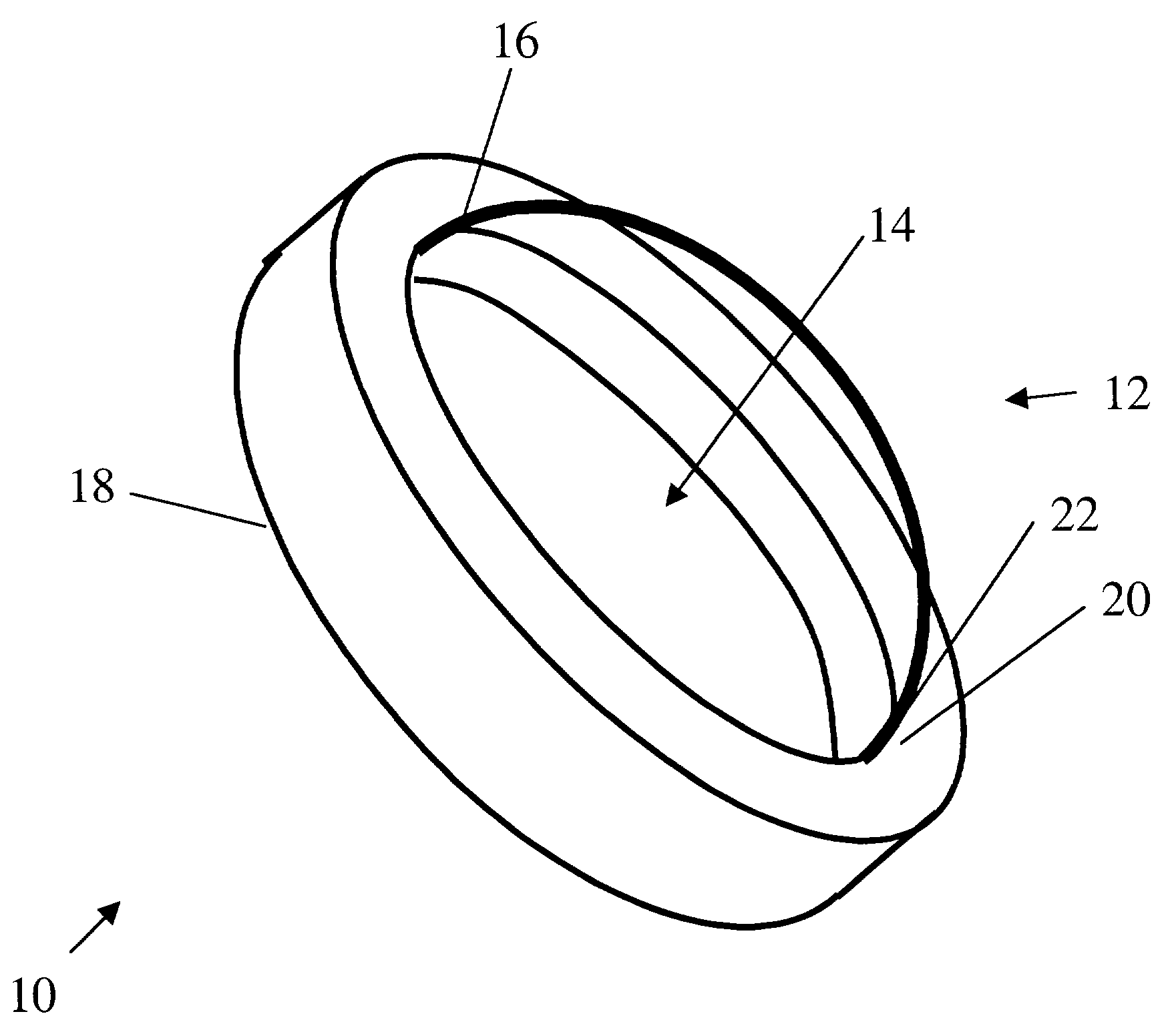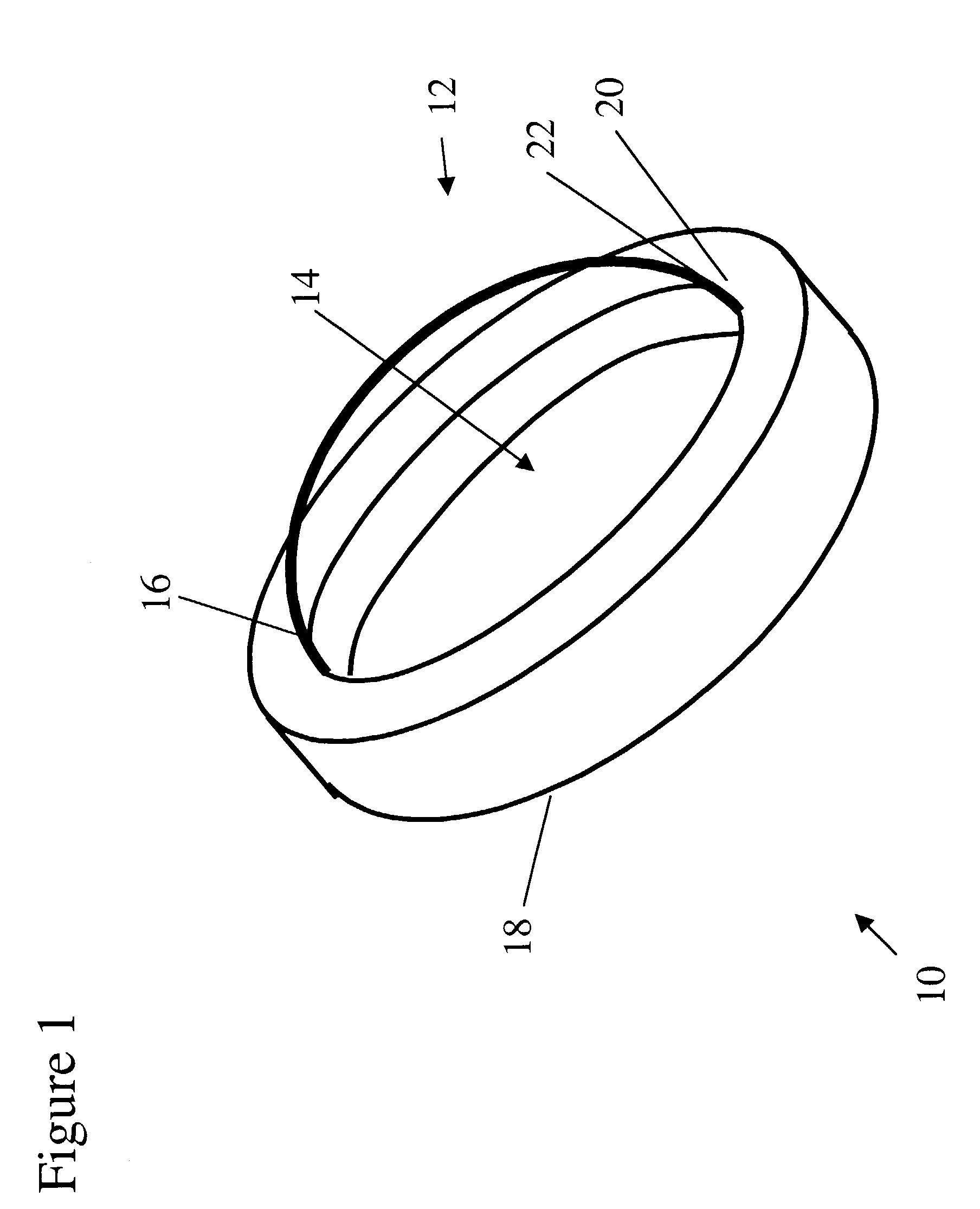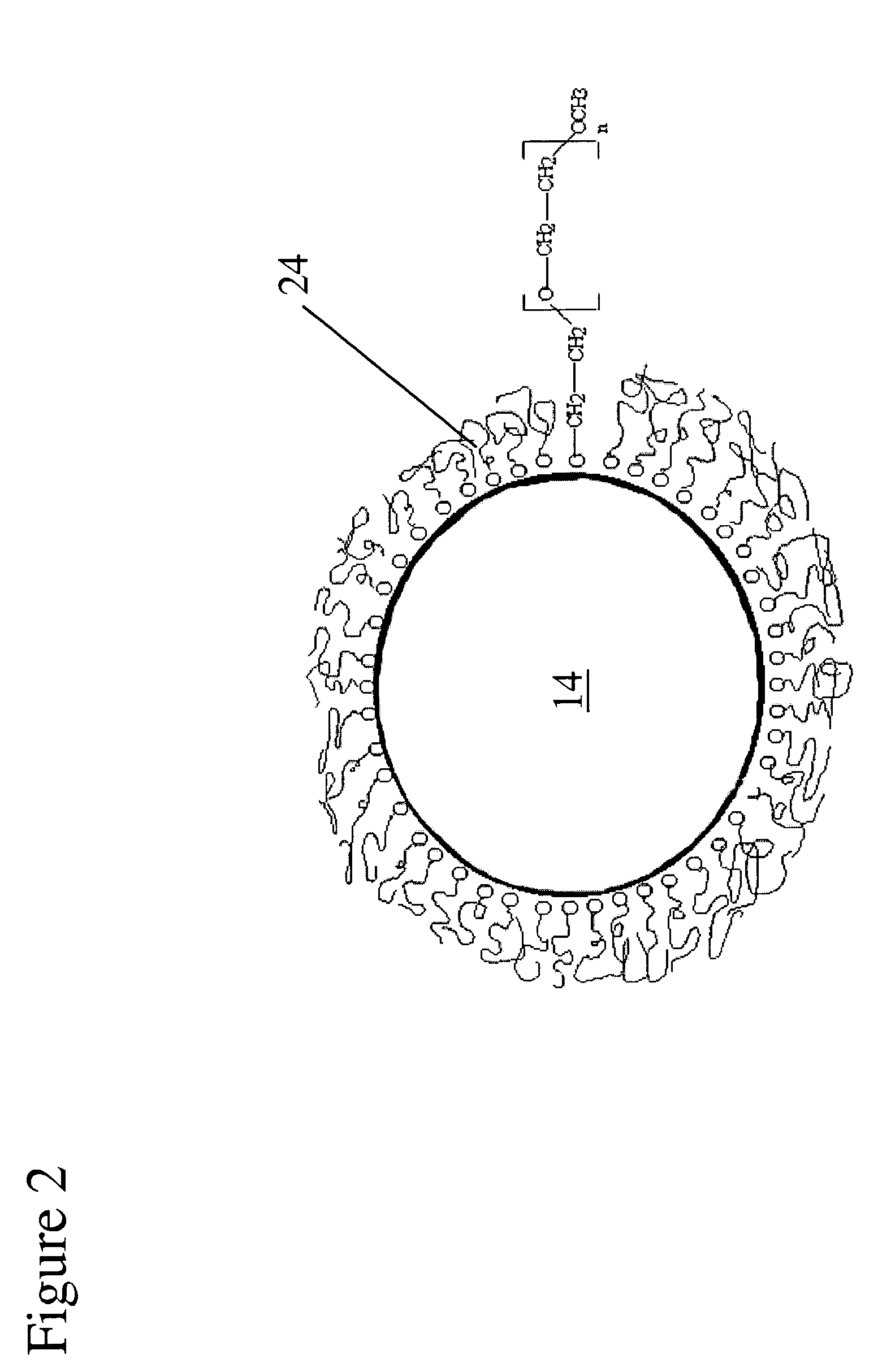Artificial cornea
a corneal and artificial technology, applied in the field of eye disorders, can solve the problems of limited vision, inability to transplant corneas, and inability to penetrate keratoplasty in underdeveloped and developing countries, and achieve the effects of improving the mechanical properties of artificial corneas, adequate mechanical strength, and convenient suture to the recipient bed
- Summary
- Abstract
- Description
- Claims
- Application Information
AI Technical Summary
Benefits of technology
Problems solved by technology
Method used
Image
Examples
Embodiment Construction
[0023]Although the following detailed description contains many specifics for the purposes of illustration, anyone of ordinary skill in the art will readily appreciate that many variations and alterations to the following exemplary details are within the scope of the invention. Accordingly, the following preferred embodiment of the invention is set forth without any loss of generality to, and without imposing limitations upon, the claimed invention.
[0024]FIG. 1 shows a schematic diagram of an artificial cornea 10 embodying features of the invention including a core / skirt construct 12 ready to be sutured onto the eye as a corneal implant. The core / skirt construct 12 has a central core 14 and skirt 18 joined at a core / skirt interface 22. The core 14, which has a core periphery 16, and skirt 18 having a skirt periphery 20 are securely attached by interface 22, which joins together the core periphery 16 with a skirt perphery 20. Skirt 18 is preferably a porous skirt. Such an artificial ...
PUM
| Property | Measurement | Unit |
|---|---|---|
| hard transparent | aaaaa | aaaaa |
| hard transparent | aaaaa | aaaaa |
| biocompatible | aaaaa | aaaaa |
Abstract
Description
Claims
Application Information
 Login to View More
Login to View More - R&D
- Intellectual Property
- Life Sciences
- Materials
- Tech Scout
- Unparalleled Data Quality
- Higher Quality Content
- 60% Fewer Hallucinations
Browse by: Latest US Patents, China's latest patents, Technical Efficacy Thesaurus, Application Domain, Technology Topic, Popular Technical Reports.
© 2025 PatSnap. All rights reserved.Legal|Privacy policy|Modern Slavery Act Transparency Statement|Sitemap|About US| Contact US: help@patsnap.com



